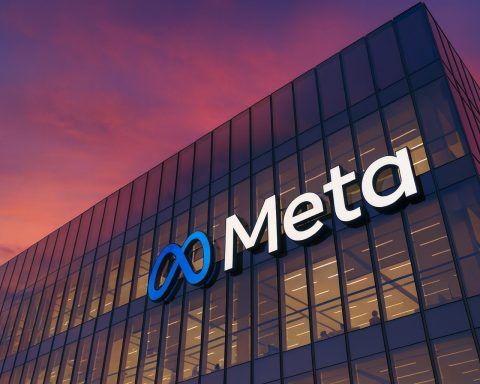Google DeepMind’s new AI weather model, WeatherNext 2, is moving from research project to everyday infrastructure. Over the last 24 hours, Google, major tech outlets and financial analysts have all confirmed that the system is now powering weather forecasts in Search, Gemini, Pixel Weather and soon Google Maps, while also emerging as a powerful tool for energy traders and hurricane forecasters. [1]
At the same time, a separate DeepMind hurricane model — built on the same family of AI weather technology — has just come through its first full Atlantic season, beating traditional models and even human experts on hurricane track forecasts, including the devastating Hurricane Melissa. [2]
Key points (for quick readers)
- WeatherNext 2 is 8× faster than Google’s previous AI weather model and produces hourly forecasts up to 15 days ahead while generating hundreds of physically realistic scenarios from a single starting point. [3]
- As of 18 November 2025, it is live in Google Search, Gemini and the Pixel Weather app, with Google Maps integration and broader developer access via Earth Engine, BigQuery and Vertex AI. [4]
- A DeepMind hurricane-specific AI model helped forecasters at the U.S. National Hurricane Center nail the rapid intensification of Hurricane Melissa, beating government models and giving Jamaica extra time to prepare. [5]
- Analysts say WeatherNext 2 could be a major new signal for energy traders, who depend on accurate temperature, wind and storm forecasts to price electricity, gas and renewable output. [6]
- Experts are excited but cautious: AI models still depend on historical data, can behave like a “black box”, and may struggle with truly unprecedented extremes in a warming climate. [7]
What actually happened today (18 November 2025)
Although Google unveiled WeatherNext 2 on its official blog yesterday (17 November), today is when the model’s real-world impact became clear, as a wave of coverage explained how deeply it’s being integrated into products and industry workflows. [8]
- TechRepublic published a detailed explainer this morning describing WeatherNext 2 as a major upgrade in AI meteorology, confirming hourly-resolution forecasts up to 15 days ahead, eight‑fold speedups over the previous version, and much lower computational cost than traditional physics-based models. [9]
- Digit followed with a technical breakdown, updated on 18 November, emphasizing that the model can generate global forecasts in under a minute and significantly improves accuracy across temperature, wind, humidity and rainfall out to 15 days. [10]
- Business Standard reported that WeatherNext 2 now powers forecasts in Google Search, Gemini and the Pixel Weather app, with Google Maps to follow, giving users more precise hour‑by‑hour updates and better alerts for changing conditions. [11]
These reports build on Google’s own announcement that WeatherNext 2 has moved from experimental lab model to core infrastructure across its consumer weather experiences and to data platforms like Earth Engine, BigQuery and Vertex AI for researchers and businesses. [12]
In short: today is the day WeatherNext 2 became something millions of people will use without realizing it.
What is WeatherNext 2?
According to Google DeepMind and Google Research, WeatherNext 2 is their “most advanced and efficient” family of AI weather models to date. [13]
Key capabilities, drawn from Google’s research pages and today’s coverage, include:
- 8× faster forecasts than the previous WeatherNext generation. [14]
- High‑resolution forecasts down to hourly steps, with guidance out to 15 days. [15]
- Ability to generate hundreds of possible weather scenarios from one set of initial conditions, each remaining physically coherent rather than random noise. [16]
- Strong performance across core variables such as temperature, wind, humidity, precipitation and pressure. [17]
- Benchmarks showing that WeatherNext 2 outperforms Google’s previous WeatherNext model on 99.9% of evaluated variables and lead times (0–15 days). [18]
DeepMind’s own science page describes WeatherNext 2 as its “state‑of‑the‑art family of weather forecasting models”, designed not just for research but for operational use by enterprises and public agencies via Google Cloud. [19]
Under the hood: a Functional Generative Network
The most novel part of WeatherNext 2 is the way it blends generative AI ideas with physical realism.
From “marginals” to “joints”
Google’s technical description explains that the model is trained only on individual weather variables — so‑called “marginals”, such as the temperature at a grid point or the wind speed at a certain height. Yet, once trained, the system is able to reproduce “joint” patterns: large‑scale weather systems like heat domes, storm tracks or the aggregate output of a wind farm. [20]
This is made possible by a new architecture called a Functional Generative Network (FGN):
- The model injects carefully controlled noise directly into its internal functions, rather than only at the input or output layer. [21]
- Each forward pass creates a different, yet physically consistent, future atmosphere — effectively generating an ensemble of plausible forecasts in one step. [22]
Where traditional numerical weather prediction (NWP) models need supercomputers and hours of processing to run large ensembles, WeatherNext 2 can produce hundreds of scenarios in under a minute on a single TPU, according to Google and today’s explainers. [23]
AI vs. physics-based models
Digit’s explainer sums up the trade‑off: physics-based models remain the gold standard because they explicitly simulate atmospheric equations, but they’re slow and expensive, which limits how often and how widely they can be run. AI models like WeatherNext 2 learn from decades of weather data – including outputs of those physics models – and then emulate the atmosphere far more quickly once trained. [24]
DeepMind’s research page adds that WeatherNext 2 generates six‑hour forecasts four times per day, providing hour‑by‑hour detail in between, which is crucial for time‑sensitive sectors like aviation, logistics and emergency management. [25]
Where you’ll see it: from phones to cloud platforms
Google and today’s coverage line up on the same core message: WeatherNext 2 is now embedded across Google’s ecosystem and available to external users.
For everyday users
Business Standard, TechRepublic and Google’s own blog all confirm that WeatherNext 2 is already powering weather in: [26]
- Google Search – the standard forecast card many people see first.
- Gemini – Google’s AI assistant, which can now answer weather questions with higher‑resolution guidance.
- Pixel Weather app – providing more precise hour‑by‑hour forecasts.
- Google Maps Platform Weather API – giving developers richer weather overlays and data feeds, with Maps itself scheduled to adopt WeatherNext 2‑powered weather in the coming weeks.
For a typical user, this should translate into more accurate short‑term forecasts, better detection of fast‑changing conditions like pop‑up storms, and clearer warnings when “worst‑case” scenarios look plausible.
For developers, researchers and companies
Google has also opened WeatherNext 2 data through:
- Earth Engine and BigQuery, for large‑scale geospatial analysis and downstream model training. [27]
- An early‑access program on Vertex AI, which lets organisations build custom models and workflows around WeatherNext 2. [28]
Analysts point out that this combination — operational deployment plus cloud access — effectively turns WeatherNext 2 into a platform rather than a single app feature. [29]
Why energy traders care so much about WeatherNext 2
Bloomberg’s coverage of the launch focuses heavily on energy markets, framing WeatherNext 2 as an AI tool specifically “targeting energy traders.” [30]
While the full article sits behind a paywall, the visible portion and follow‑up analyses highlight several reasons the trading world is paying attention:
- More accurate 1–2 week forecasts
Energy traders live and die by medium‑range forecasts of temperature, wind, cloud cover and pressure, which influence heating and cooling demand, hydropower inflows and wind or solar generation. WeatherNext 2 promises sharper guidance on those variables out to roughly two weeks, a prime window for power and gas markets. [31] - Faster scenario analysis
Because the model can generate hundreds of physically coherent scenarios in minutes, traders or risk teams can stress‑test portfolios against different weather paths: mild vs. severe cold waves, storm tracks that hit or miss key transmission corridors, or wind droughts that cut renewable output. [32] - Hyper‑local signals and improved accuracy
A detailed market analysis from TokenRing AI argues that WeatherNext 2 can deliver kilometre‑scale forecasts and claims up to 20% improvement in precipitation and temperature errors compared with 2023‑era AI models, potentially upgrading how traders estimate local demand and renewable supply. [33] - Automation and risk management
That same analysis suggests WeatherNext 2 could drive automated decisions such as optimising energy storage, adjusting industrial demand response, and better hedging against extreme weather shocks, not only in power and gas but across supply chains that depend on reliable weather signals. [34]
In other words, WeatherNext 2 isn’t just about “is it going to rain?” — it’s about pricing weather as risk in financial markets.
Hurricane Melissa: the case study that sold meteorologists on AI
WeatherNext 2’s rollout coincides with the end of a remarkable 2025 Atlantic hurricane season, where a related Google DeepMind model quietly became a star performer.
The AI that saw a Category 5 coming
In a detailed report published on 16 November, The Guardian describes how National Hurricane Center (NHC) forecaster Philippe Papin used DeepMind’s hurricane‑specific AI model to make an unusually bold call on Hurricane Melissa. [35]
Key points from that account:
- When Melissa was still a tropical storm south of Haiti, Papin issued guidance that it would jump to a Category 4 hurricane within 24 hours and turn toward Jamaica — an intensity forecast NHC forecasters had never made that early for such rapid strengthening. [36]
- Papin later explained that around 40 of 50 ensemble members from Google’s DeepMind model showed Melissa reaching Category 5 strength, giving him confidence to warn about extreme intensification even before traditional models fully caught up. [37]
- Melissa ultimately struck Jamaica as a Category 5 hurricane, one of the strongest landfalls in nearly two centuries of Atlantic records, making the early AI‑assisted forecast critically important for evacuations and preparations. [38]
Beating traditional models — and humans
Independent evaluations back up the idea that DeepMind’s hurricane model wasn’t a one‑storm fluke:
- A report in heise online summarising work by researcher Brian McNoldy and others finds that during the 2025 season, DeepMind’s AI produced the most accurate track forecasts across the tested models, with a typical 5‑day track error of about 165 nautical miles, compared with roughly 360 nautical miles for the U.S. GFS model. [39]
- The same analysis notes that, for the first time, an AI system has systematically outperformed human forecasters at the NHC on storm tracks, even as humans remain essential for interpreting and communicating the guidance. [40]
- A Nature news piece earlier this autumn similarly reported that across the 13 named storms so far, the DeepMind model has generally performed well on both track and intensity, further reinforcing the strong 2025 showing. [41]
TechRepublic explicitly links these results to WeatherNext 2, noting that the latest model family grew out of the same research that produced this hurricane tool and that the new release coincides with growing interest in AI’s role in forecasting dangerous storms. [42]
Why scientists are still cautious
For all the hype, researchers quoted today and in recent weeks stress several important caveats.
1. Dependence on historical data
A University of Chicago‑led study, highlighted by TechRepublic, suggests that neural networks can struggle to predict events that lie outside the historical patterns on which they were trained. That means:
- AI models may be excellent at interpolating within known climate regimes.
- But they could miss truly novel extremes — such as unprecedented heatwaves, prolonged megadroughts or compound disasters — if there is little analogue in past data. [43]
Given climate change is pushing weather into new territory, this is a serious limitation.
2. The “black box” problem
Both The Guardian and other commentators point out that DeepMind’s AI models are largely closed and opaque:
- The internal workings of the hurricane model and WeatherNext 2 are not fully available to independent researchers, unlike the open documentation of most government weather models. [44]
- Retired NHC forecaster James Franklin is quoted as saying that, while the forecasts are clearly very good, the model behaves as a black box, making it harder for experts to understand why it made a particular call — crucial when lives and property are on the line. [45]
3. Fair access and global equity
TokenRing’s analysis raises the concern that advanced AI forecasts could deepen global inequalities if only wealthy institutions can afford them:
- Many of the regions most vulnerable to extreme weather are in developing countries with limited budgets for high‑end cloud services.
- If the most accurate forecasting tools remain concentrated in a few tech companies and paying clients, poorer nations could be left behind, even as they bear the brunt of climate impacts. [46]
4. AI is a complement, not a replacement — at least for now
Digit, TechRepublic and heise all converge on a similar conclusion: for the moment, AI works best alongside physics‑based models and human expertise, not as a total replacement. [47]
That hybrid future may involve:
- Government and private forecasters blending AI outputs with traditional NWP guidance.
- Using AI ensembles to identify risky scenarios, then checking those against physics-based models and domain knowledge.
- Investing in interpretability research and better open evaluation frameworks so forecasters can trust and calibrate AI systems.
What this means for you (and for the next few years)
On a practical level, here’s how today’s developments could play out:
For ordinary users
- Your Google weather cards — in Search, on Pixel phones, and soon inside Google Maps — should gradually feel more precise and responsive, especially for hour‑by‑hour changes and fast‑moving storms. [48]
- Gemini‑powered assistants will be able to reference richer scenario information, not just a single deterministic forecast, though how much of that uncertainty is exposed to users will depend on product design.
For businesses and governments
- Utilities, grid operators and energy traders can plug WeatherNext 2 data into demand forecasting, renewable generation models and risk systems, allowing more surgical hedging against weather‑driven volatility. [49]
- City planners, insurers and disaster‑management agencies can run large ensembles cheaply, improving their ability to ask “what if?” about flood events, heatwaves or wind damage scenarios. [50]
For science and forecasting
- The strong 2025 hurricane season performance has convinced many meteorologists that AI will now be a permanent part of the forecasting toolkit, not a novelty. [51]
- At the same time, the limitations around non‑stationary climate, data gaps, and black‑box behaviour mean researchers are pushing for hybrid AI–physics models and stricter evaluation before AI replaces any official systems. [52]
References
1. blog.google, 2. www.theguardian.com, 3. blog.google, 4. www.business-standard.com, 5. www.theguardian.com, 6. www.bloomberg.com, 7. www.techrepublic.com, 8. blog.google, 9. www.techrepublic.com, 10. www.digit.in, 11. www.business-standard.com, 12. blog.google, 13. blog.google, 14. blog.google, 15. blog.google, 16. blog.google, 17. blog.google, 18. blog.google, 19. deepmind.google, 20. blog.google, 21. www.techrepublic.com, 22. blog.google, 23. blog.google, 24. www.digit.in, 25. deepmind.google, 26. www.business-standard.com, 27. blog.google, 28. blog.google, 29. markets.financialcontent.com, 30. www.bloomberg.com, 31. www.bloomberg.com, 32. blog.google, 33. markets.financialcontent.com, 34. markets.financialcontent.com, 35. www.theguardian.com, 36. www.theguardian.com, 37. www.theguardian.com, 38. www.theguardian.com, 39. www.heise.de, 40. www.heise.de, 41. www.nature.com, 42. www.techrepublic.com, 43. www.techrepublic.com, 44. www.theguardian.com, 45. www.theguardian.com, 46. markets.financialcontent.com, 47. www.digit.in, 48. www.business-standard.com, 49. www.bloomberg.com, 50. blog.google, 51. www.theguardian.com, 52. www.techrepublic.com










